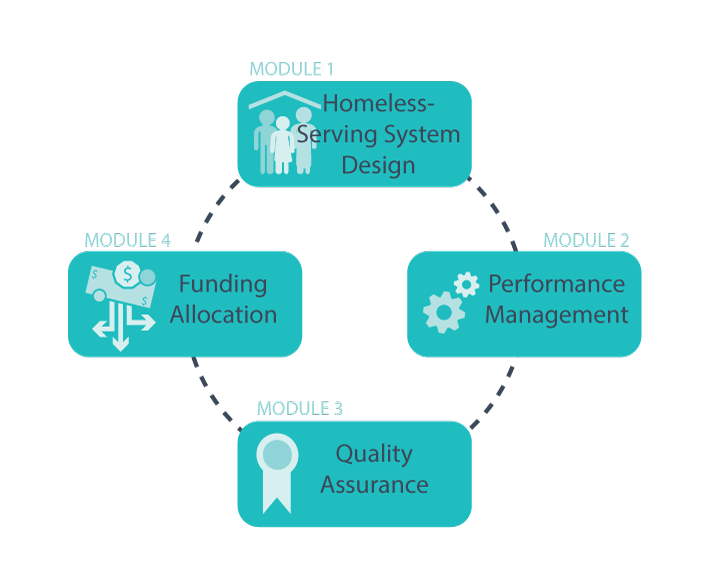Introducing the Guide
In its renewal of the Homelessness Partnering Strategy (HPS), the Government of Canada has prioritized Housing First as a key strategy to reduce homelessness. A Housing First approach focuses on moving people who are experiencing chronic or episodic homelessness as rapidly as possible from the street or emergency shelters into permanent housing with supports to maintain housing stability.
To support communities transitioning to Housing First, HPS commissioned the development of a guide to performance management specifically for Community Entities with the support of the Canadian Observatory on Homelessness. The Guide is accessible in full here, a French version is also available.
You can also register for today's Homeless Hub webinar from 1-2PM (EDT) that introduces the key topics covered in the Guide.
What is performance management?
Performance management is essential to understand the effectiveness of interventions funded under HPS, as well as a community's overall progress towards reducing homelessness. It is important that communities develop effective performance management processes to link their efforts to national-level goals and benchmarks.
Performance management can help you:
- Articulate what your homeless-serving system, as a whole, is trying to achieve;
- Illustrate whether progress is being made towards preventing and reducing homelessness in a particular community;
- Keep programs accountable to funders;
- Quantify achievements towards the goals of the Community Plan and HPS targets;
- Use information gathered for continuous improvement;
- Align program-level results to client outcomes at the individual and system-levels; and
- Inform the next round of strategy review and investment planning.
An Overview of the Guide
The Guide consists of 4 modules, each building on previous discussions on interrelated topics.

Module 1 - Designing the Homeless-Serving System discusses the tenets of Housing First as program and philosophy and links these to system planning. The Module provides an introduction to implementing a systems approach focusing on the role of the CE in leading the development of a local homeless-serving system. This is an important first step to introducing performance management.
Module 2 - Performance Management introduces the concepts of performance indicators and targets to enable program and system-level analysis. These concepts are brought together in real-life examples to illustrate the systems approach to performance management in CE practice.
Module 3 - Quality Assurance outlines key processes and procedures that aim to improve service impact through continuous improvement with a focus on service standards, program monitoring and risk management.
Module 4 - Funding Allocation brings the concepts discussed full circle by linking performance management, system planning, and quality assurance to CE investment practices. Financial monitoring is presented as a powerful tool that can be leveraged in performance management, with particular focus on developing eligible costs guidelines and benchmarking costs. The module discusses annual funding cycles that incorporate funding allocation into strategic review and business planning processes.
The modules begin with an overview of the main aims of each section, present detail discussions on themes, and end with a summary, reflection questions, and key considerations for smaller CEs to highlight essential steps in a particular practice area. Each module points you to sample resources, such as client grievance and serious incident forms, contract boilerplates, etc. from the CE Resource Inventory, which you can adapt locally.
Building a Resource Inventory
The Guide was developed through research and key stakeholder consultation to collect and review existing promising practices from 14 CEs. Practices across a range of communities varying in size were reviewed to shape the content of the Guide and identify promising approaches. The review process also included consultation with national organizations and drew on US, UK and Australian performance management practices to complement Canadian findings.
We are extremely thankful for the willingness of the 14 CEs to freely share resources and knowledge to build the collective effort to end homelessness. In fact, over 80 resources have been shared to date. These resources include: calls for proposals, privacy policies, safety guidelines, data collection examples, service standards, indicators of progress, system planning frameworks, and more.
It is our hope that this online inventory supported by the COH will continue to grow as the community of practice evolves in our country – and we call on everyone to contribute further to ensure its ongoing relevance and continuous improvement. You can access the current CE Resource Inventory here.


